Echigo Tsumari Art Triennale guide for the arts lover in Niigata
One of my favourite things from my road trip around Niigata was checking out the Echigo-Tsumari Art Field, an art festival with many interesting contemporary artworks that tell the history and stories of this rural agricultural area. Here’s my Echigo Tsumari Art Triennale guide on how to get around ETAT, what key artworks to look out for when you visit and some tips to help you better explore this Niigata region.
Echigo Tsumari Art Triennale 2024 starts from 13 July to 10 November. Find out more at the ETAT website. You can also check out my article about ETAT on ST Life [paywall].
About the Echigo-Tsumari Art Triennale
The Echigo-Tsumari Art Triennale (ETAT) is one of Japan’s largest arts festivals that takes place in southern Niigata across 6 areas – Echigo-Tsumari are actually old names for Tokamachi and Tsunan respectively.
ETAT is actually the predecessor of the Setouchi Triennale in the Seto Inland Sea area that I visited in 2016 – ETAT started in 2000 and was a way to revitalise the agricultural Niigata region which had an aging population and was losing young people to the cities.

Echigo-Tsumari Art Field Locations
I spent 3 nights in this area and about 3 days exploring I based myself in Tokamachi City and spent a fair amount of time exploring neighbouring Matsudai and Matsunoyama, as well as heading out to Nakasato to see the Kiyotsu Gorge.
Here’s a map detailing where I went and what I saw, as well as some things I wish I had time for along the way. A note that this is based on my visit in 2023, there may be new additions to check out with the newer editions of ETAT.
Tokamachi 十日町
While Tokamachi refers to the wider area that covers all the towns I list below, Tokamachi City is probably the busiest district within this area and where I based myself to explore the festival. Tokamachi is one of the easier spots to get to because it is on the Hokuhoku train line, and most of the main artworks are within walking distance of the downtown area as well, which makes it an ideal base if you don’t have a car.
Museum on Echigo-Tsumari / MonET (T025)
The Museum on Echigo-Tsumari (MonET) (entry fee/passport required) is the main heart of ETAT and a good place to see a bunch of works and pick up information and maps to plan your route, and has the most comprehensive merchandise store of all the locations.

There are too many works to list comprehensively, but some of the works I enjoyed at MonET:
- LOST #6 (T230) by Kuwakubo Ryota – a little train goes around a model of Tokamachi city in a dark room casting really interesting shadows on the wall as it circles the tracks, using these shifting shadows to tell a story of Tokamachi’s history
- SOIL LIBRARY/NIIGATA (T280) by Kouichi Kurita – this artist collected soil samples from all around Niigata and arranged them aesthetically – so pretty and an intriguing work
Check out the MonET website for more.

IKOTE (T309)
Also known as the Tokamachi Industry and Cratft Center, We had one of our first meals in Tokamachi at the beautiful igloo-shaped IKOTE not too far away from MonET – the architects Takaharu and Yui Tezuka also built the Kyororo building in Matsunoyama. The shape of the house is due to the massive snowfall they get around these parts.
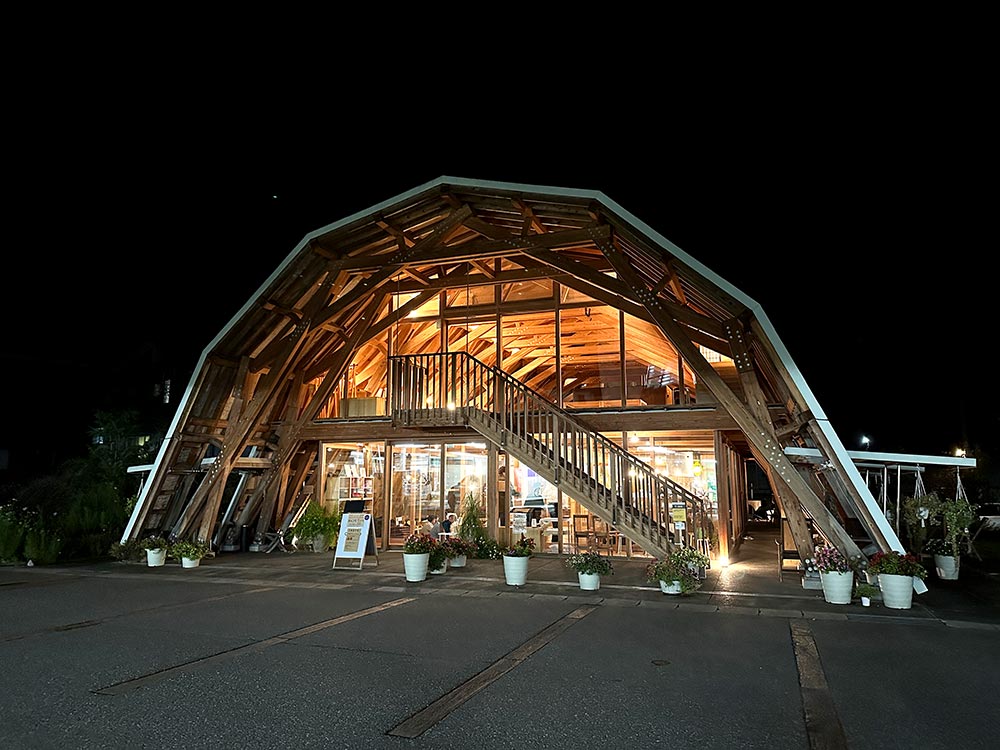

Hachi and Seizo Tashima Museum of Picture Book Art (T173)
Hachi and Seizo Tashima Museum of Picture Book Art (entry fee/passport required) is a fantastical installation set in an old disused school set a bit further out from downtown Tokamachi.
While it delves in to the issue of losing the young to the cities, this work has a lot of whimsy, wistfulness and nostalgia in it, quite different from The Last Class in Mastunoyama (see below) which is also about the loss of youth – it’s interesting to see how different artists tackle similar themes in completely different ways across the festival.



House of Light (K005)
James Turrell’s House of Light is technically in Kawanishi 川西 but it’s not far by car from Tokamachi City. A beautiful traditional style house on stilts up on top of the hill, you can visit the work as a guest for a very short period in the afternoon, but the best way to experience the House of Light is to stay overnight so you can witness the light changing segments at sunset and sunrise.
Check out my detailed review of the House of Light and what you can expect if you stay overnight.
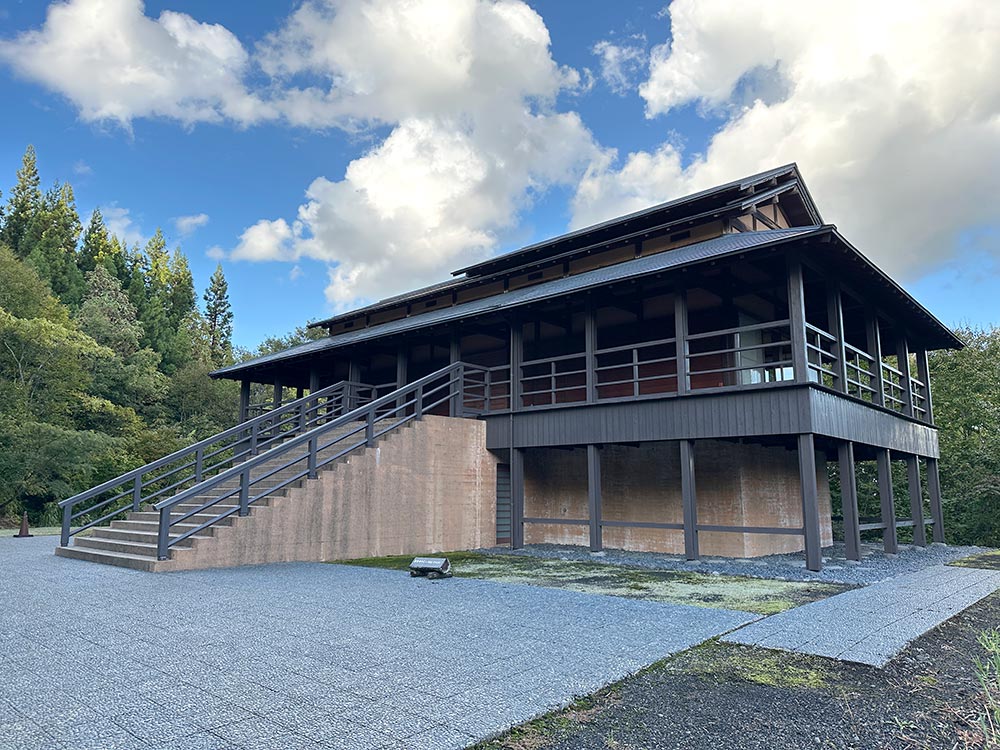
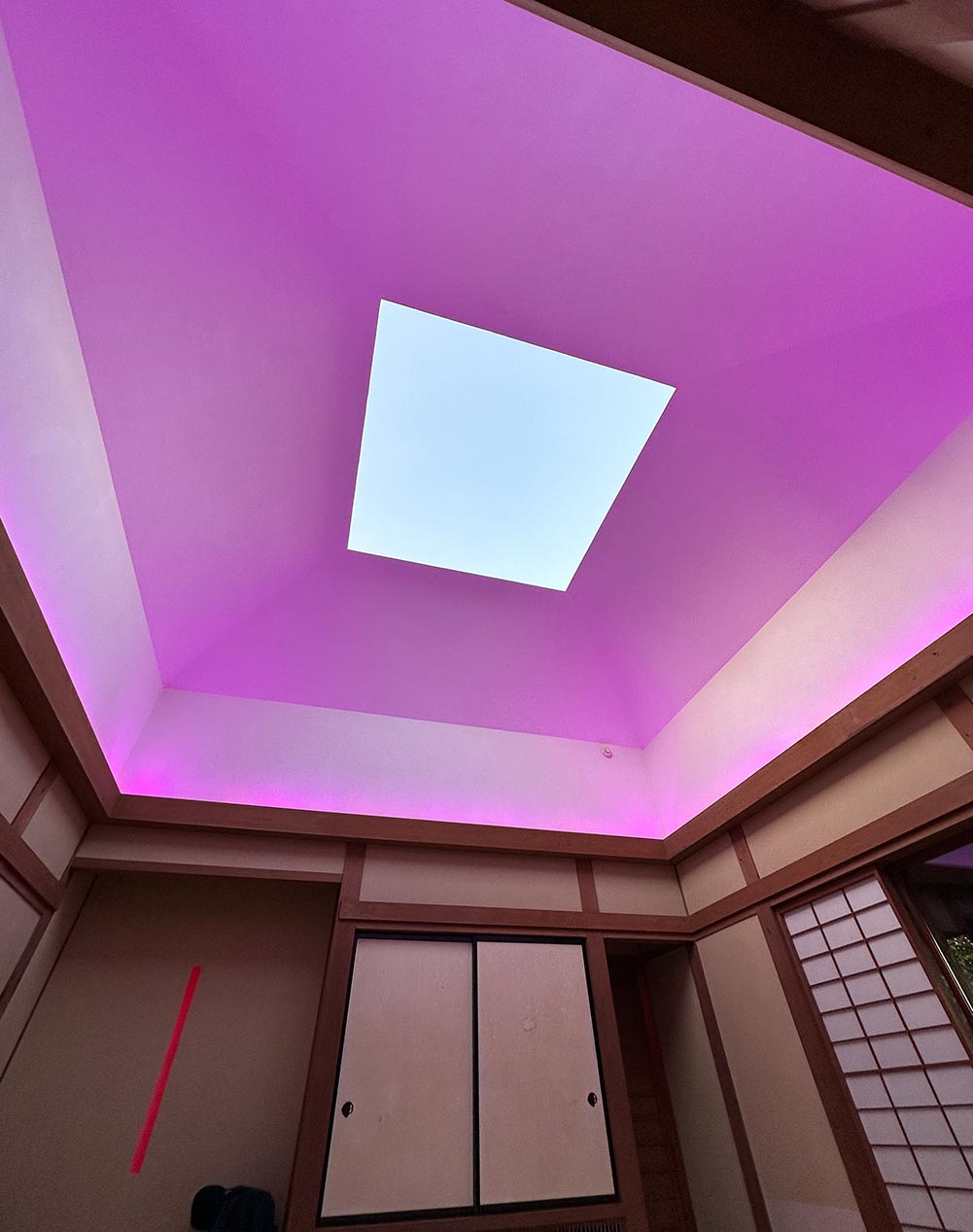

There are some other artworks to see in the Kawanishi area if you venture up towards the Fushiguro Castle Ruins area, but these are mostly smaller sculptures scattered around the area. Only recommended if you have time and the weather is good because the road leading there is a pretty narrow mountainous stretch.
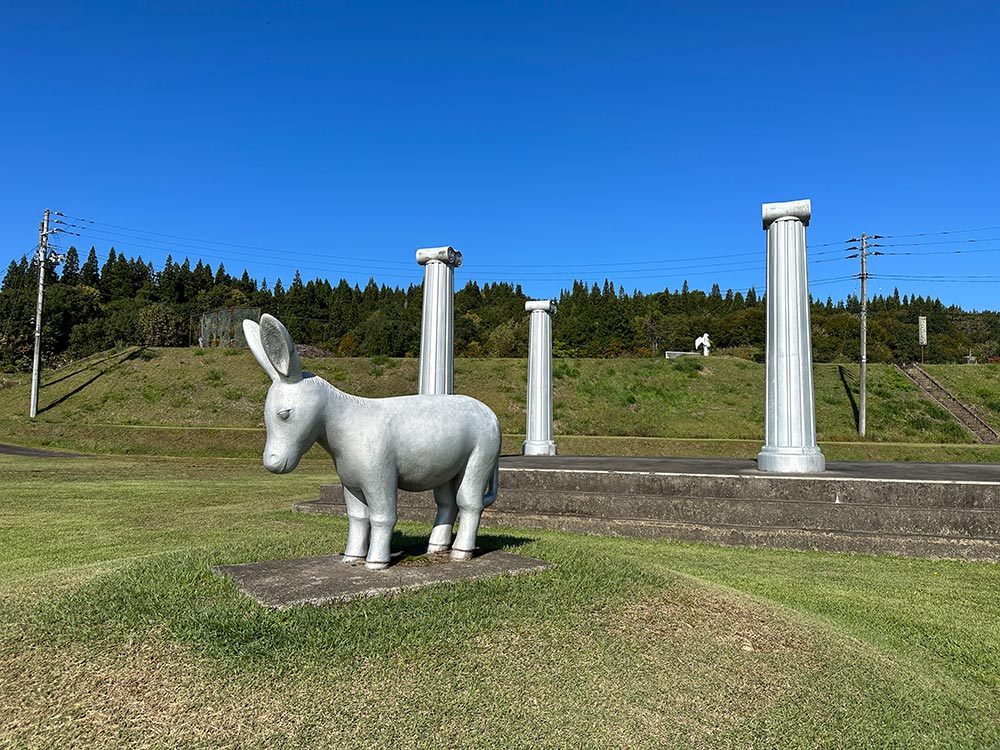
Other things to do in Tokamachi
One of the highlight foods to eat in this area is something called hegisoba, a special type of soba created from buckwheat and funori seaweed. My guesthouse folk recommended us the restaurant Nishino which was a short walk from the house and the train station. We tried both hegisoba and hegiudon (the udon version) – they are pretty filling so pace yourself, and generally ate a lot at this meal, so good!
If you need more options, another hegisoba restaurant recommended to me is Echigo Tokamachi Kojimaya.

Nishino にし乃 [Google maps]. Open 1130am – 2pm, 530pm – 10pm. Closed on Tuesdays.
Tokamachi Koryukan is the guesthouse that I stayed at in Tokamachi for 2 nights and I highly recommend it not just for its great location (a short 10 minute to Tokamachi Station and an even shorter drive). This is a cute traditional style guesthouse that’s also a cafe sometimes during the day time.
The owners are really nice and friendly and speak pretty good English, and gave us excellent recommendations on things to check out around the area. They even helped us arrange to forward our luggage via Takkyubin and sent us to the office to get it done! They have many kimonos you can try on in the hallway – that’s another product that Tokamachi was once well known for!
Facilities wise, they prepare an excellent traditional style Japanese breakfast – rice topped with a fresh raw egg and some fish and veg side dishes. It’s a shared bathroom but a large onsen bath style one that has its own cloakroom.




Tokamachi Fureai no Yado Koryukan 十日町ふれあいの宿 [Google maps]. Make a reservation via the Tokamachi Koryukan website.
Matsudai 松代
Matsudai is located about 30-40 minutes’ drive west of Tokamachi City with a hub near the train station and some pretty cool installations around the area.
Matsudai NOHBUTAI Field Museum (D053)
The Matsudai NOHBUTAI Field Museum (entry fee/passport required) is a funky looking building with a good collection of works both within and around the building. This building is a short walk from the Matsudai Train Station, again another convenient hub for the non-drivers.
Matsudai Castle is also nearby but up a pretty steep slope so you do need to drive to get there.
More at the Matsudai NOHBUTAI website.



Matsudai Castle
Matsudai Castle (entry fee/passport required) is right next door but located on top of a lofty 384m tall hill which you will need to drive to, and then slowly walk up (15 mins for normal people, 10mins if you ran like I did).
We practically ran up this hill because we visited very close to closing time and I only had 8 minutes to see everything! There are 3 works, each found on a different level, and some other sculptures scattered along the hillside.


Perspectives of Longing (D377) by Esther Stocker is the first sight that greets you, an incongruously contemporary visual of a giant crushed up ball in what would have been the entrance hall of this once traditional building.
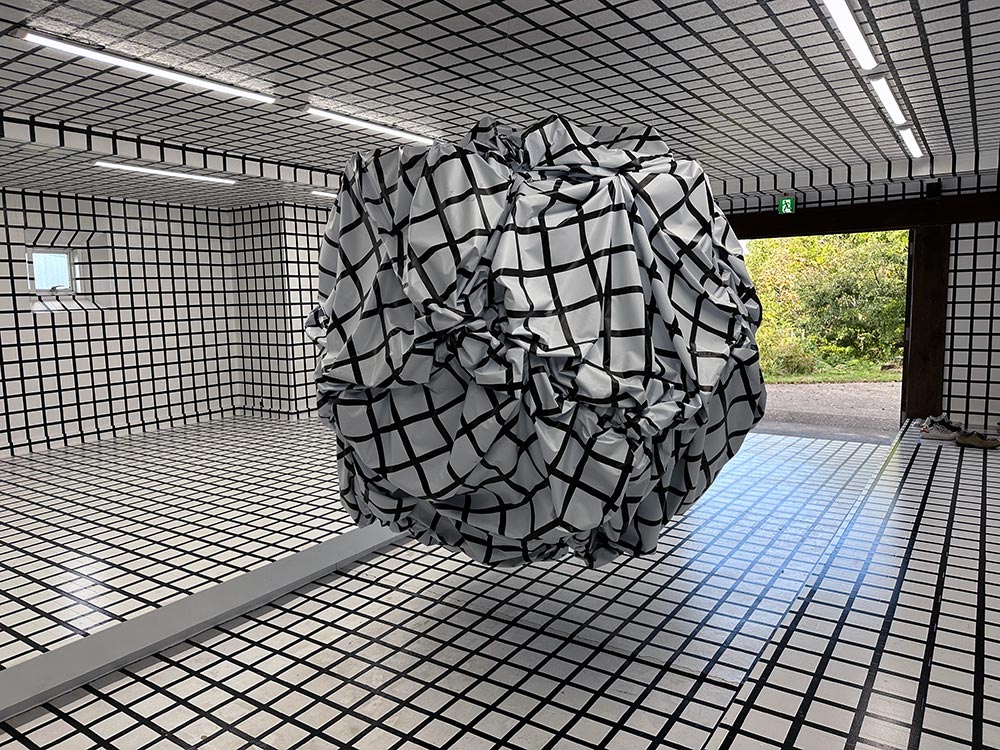
Going up to the second level is Laxudai (D378) by Toyofuku Ryo, a glitzy golden house in that sandwich level between the ground and top floor. It’s like a hidden little world within the castle.

Finally on the top floor with the best views of the surrounding area is Shedding Time (D379) by Kurakake Junichi feels like a meditation room, where the dark walls and round openings allow you to really focus on the splendid view of the surrounding countryside.


Other things to do in Matsudai
Rice is of course the main feature in Niigata, but in these hilly parts, the Hoshitoge Rice Terraces are one of several tanada (rice terraces) that make for spectacular viewpoints. I visited in October which is pretty out of season – the best times to visit will be middle of the year when the terraces are filled with water, and will reflect the sunrise/sunset light.
There was a cute little cafe and camp within the trees here called Tree Camp and Chaya 星峠宿 – unfortunately it was closed when we were there as it’s only open in the summer season. Seems like a cute place to stay or get a drink at!
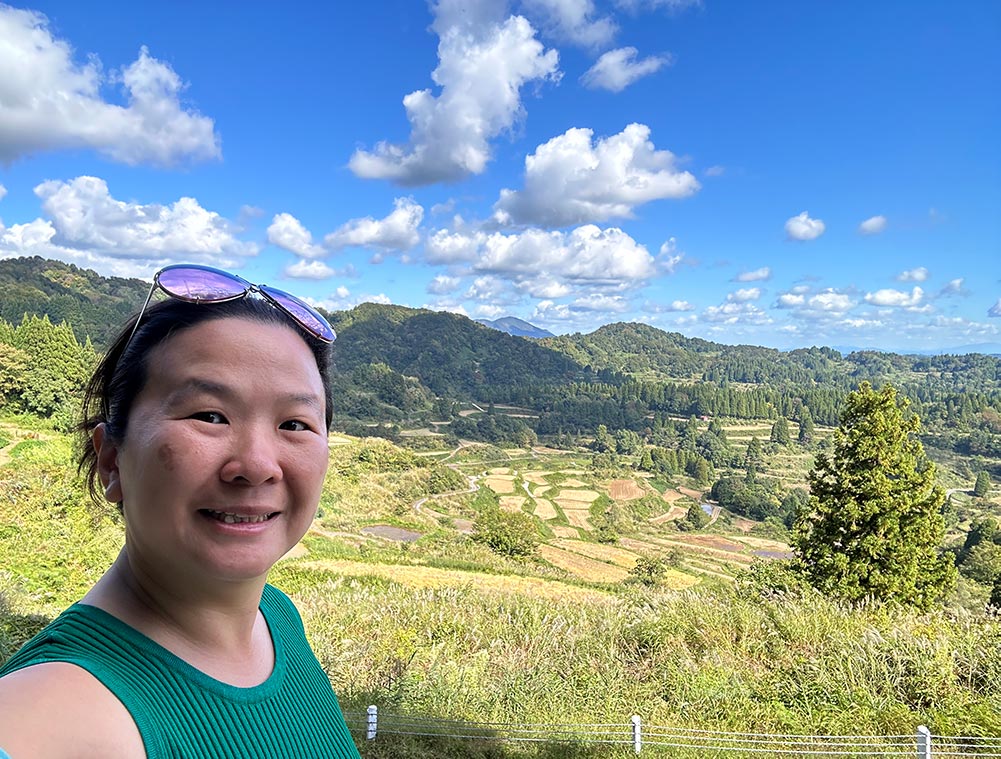

We also visited the Matsudai Shibatouge Onsen: Unkai 峠温泉 雲海 which is a lovely hot spring facility up on the mountain and views of the surrounding valley from the hot spring pools. I couldn’t take pix of the view, but it’s a lovely place to soak in after a long day of art hunting! You could also stay overnight here and there is an ETAT sculpture here (I didn’t photograph it because it was already dark).

Matsunoyama 松之山
Matsunoyama is a renowned hot spring area and a favourite apres-ski spot during the winter season. The onsen water here is supposed to have very strong medicinal properties and be good for health and beauty.
The Last Class (Y052)
The Last Class (entry fee/passport required) takes place in the abandoned Higashikawa school and is really atmospheric and haunting. You enter the dimly lit school hall where table fans lazily blow around straw and hay on the floor. Further in, the dark hallways feel like a horror movie with the thumping of heartbeats echoing through the building – the French artist Christian Boltanski has a work on Teshima in Setouchi Triennale that also uses heartbeats (in a less scary way).




House Memory (Y072)
House Memory (entry fee/passport required) by Shiota Chiharu takes a traditional minka house and makes it look like a human-sized spider took over it, with 44,000m of black yarn used to create webs throughout the house. It’s a pretty cool experience walking through this, especially when you discover the objects hidden in the webs which belonged to the villagers – items they couldn’t bring themselves to discard even though they weren’t needed.



Other things to do in Matsunoyama
Matsunoyama onsen is the main reason people visit this area and most of these are located along the stretch of road in what feels like the valley of the area. I was recommended to check out Takanoyu but there are several options around here. The water is unusual in that it’s apparently sea water trapped underground millions of years ago, so it’s salty and the mineral content is also very high, making it one of the top medicinal hot springs in Japan.
There is a free public foot bath along this stretch of road. The water is pretty hot so you will need to run the cold water for a bit if you want to use it without scalding your feet, but it has a nice view of the area and one of the ETAT artworks nearby.



We had lunch in Matsunoyama in a restaurant called Yama’ai or San’ai that is famous for their huge portions of katsudon cooked in the hot spring water here. You can see in this picture below – that is ONE portion believe it or not. We asked the lady boss to split it into two for us and were honestly quite sure that she had mistakenly served us two portions, but nope that’s one portion! Very good katsudon.

Yama’ai/San’ai お食事処 山愛(さんあい) [Google maps] Open daily 11am – 830pm.
Another nice spot to visit is the Bijin Bayashi or Beauty Forest 美人林. The trees here were chopped down in the early 1900s and left the mountain side very bare. Around the late 1920s, they replanted the entire forest with Beech trees which is why all the trees here are unusually uniform in terms of height and growth. It was still very green when we visited in early October – November is when the autumn orange colouring really shows up.


Next to the Bijin Bayashi forest is another ETAT work that I really wanted to see but for some reason closed that very day we visited. Kyororo (Y019) or the Echigo-Matsunoyama Natural Museum of Science (entry fee/passport required) has weather-proof architecture meant to tolerate up to 2000 tons of snowfall! The exhibitions here focus on wildlife found around this area as well as some ETAT artworks.

Nakasato 中里
Located south of Tokamachi, the highlight of Nakasato is Kiyotsu Gorge, one of the must-sees in the area whether you are an art fan or not, as it is one of the 3 largest gorges in Japan.
Tunnel of Light (N079)
Kiyotsu Gorge 清津峡 (entry fee/discount with passport) has long been famous as one of the top 3 gorges in all of Japan, but in 2018, the 750m tunnel walk through the mountain was transformed into the Tunnel of Light (N079) with artworks and photo worthy spots against an amazing gorge view. There are also some bits sharing about the history of this area within the tunnel – they’ve found fossil evidence of prehistoric sharks around here!
More at the Kiyotsu Gorge website. Note that during ETAT season and peak months you have to make advanced reservations to visit for crowd control.

The various artworks that make up Tunnel of Light are meant to represent different elements.



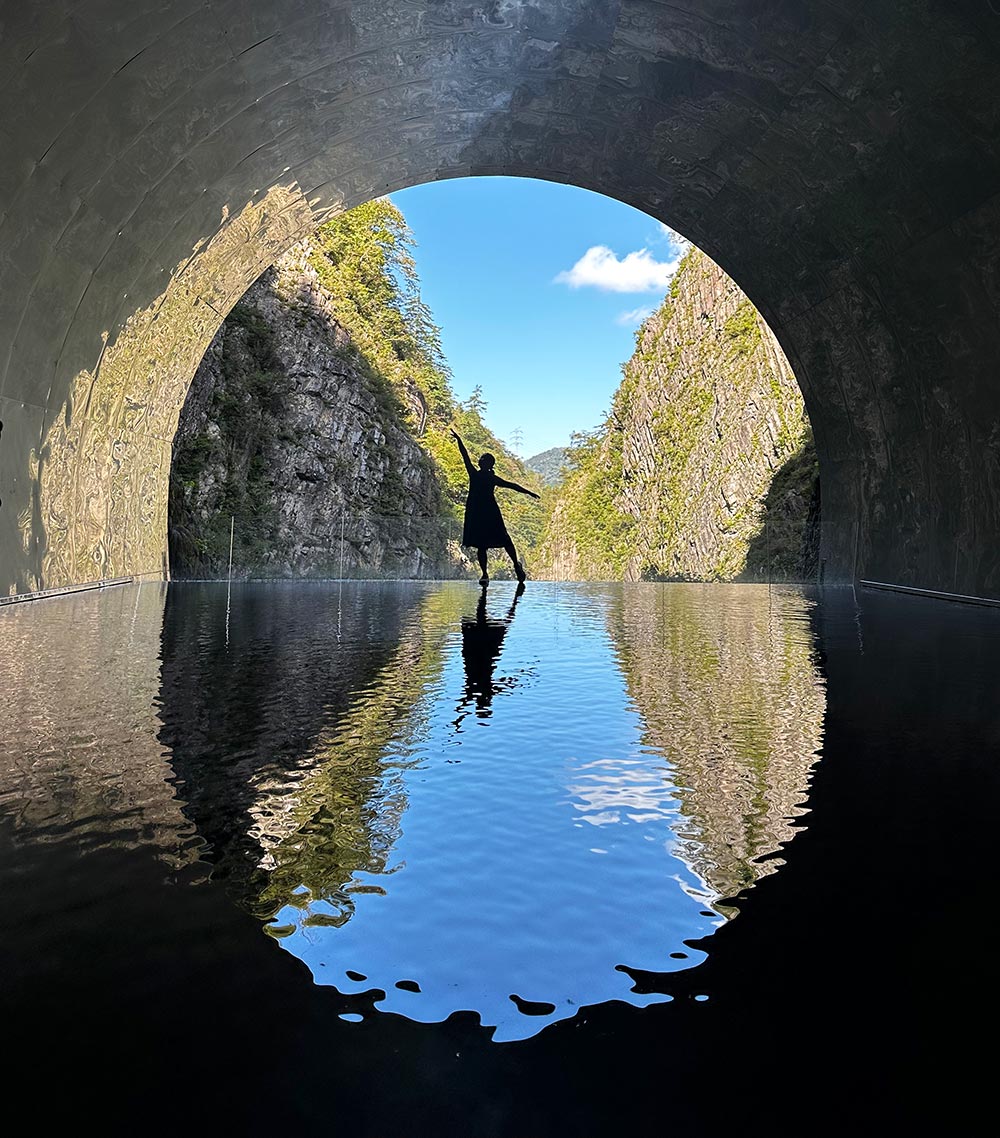

Don’t miss the little building free footbath and ‘Periscope’ at the gift shop near the entrance and


The Isobe Yukihisa Memorial Echigo-Tsumari Kiyotsu SoKo Museum of Art (N072) or Kiyotsu Warehouse Museum is set in a former school building and located en route to the gorge – sadly it was closed when I was there so I didn’t get a chance to visit.
Nearby: Echigo Yuzawa
Nakasato is about half an hour by driving away from Echigo Yuzawa, a very popular ski area accessible from Tokyo via Shinkansen. The Echigo Yuzawa train station is also home to the Ponshukan where over 130 different sakes are available to test drink and a sake hot spring bath!
Read more over at my Niigata hidden gems post.

Planning to visit Echigo-Tsumari Art Triennale
This sprawling art festival in the rural areas of Japan needs a bit of preplanning if you want to maximise your time here. Here are my suggestions on getting around ETAT.
When to visit Echigo-Tsumari Art Triennale
I visited ETAT in October 2023, but the neat thing is that you can visit outside of the triennale years as there are over 200 permanent works on display. 2024 is a good year to visit as it is a triennale year so expect to see new works this season!
When you’re planning on which days to visit the Echigo-Tsumari Art Triennale, most of the works will be open on the weekend (Saturdays and Sundays), but it may also be a lot more crowded.
Avoid visiting ETAT on Tuesdays and Wednesdays because most things are closed then for maintenance. In 2023 I visited on Thursday and Friday – it was generally not crowded, but only half the works were open then.
The weather in early October was the tail end of summer, so around the low 20ºCs in the day, dropping to the high 10ºCs in the evening where you might need a light jacket. Trees in general were still pretty green – you need to visit in November for autumn foliage.
How long do you need for Echigo-Tsumari Art Triennale
I spent 3 nights in Niigata – 1 in Kawanishi staying overnight at the James Turrell House of Light, and 2 nights at Koryukan Fureai in Tokamachi City (more in the Tokmachi section), which felt like enough time to see the many of the highlights, but you may want to allocate yourself more time if you want to go deep and go slow.

How to get to Niigata
Southern Niigata is about 200km northwest of Tokyo. The easiest way to get from Tokyo to Niigata is to:
- Take the Joetsu Shinkansen – Tokyo Station to Echigo Yuzawa – 1 Hr 20 mins
- Connect by Train – Hokuhoku line from Echigo Yuzawa to Tokamachi/Matsudai (roughly 40 mins)
- Connect by Car – rent a car at Echigo Yuzawa and drive to Nakasato (30mins) or Tokamachi (40 mins)
Best way to get around Echigo-Tsumari Art Field
Self-driving by car is by far the best way to get around these parts because it’s pretty rural and mountainous. Some of the artworks in particular are based in remote locations and not the easiest to visit.
Tip: Pick up a large paper guide map at the start of your trip – it has both a detailed map with numbers + info and a photo gallery of ALL the ETAT works which was easier to refer to in the car as compared to scrolling on the phone.
Some of the works require a bit of effort to get to, but quite honestly not all of them are worth the effort if you’re short on time so don’t feel too pressured to cover every single work. Most of the outdoor works are sculptures – I focused on the hubs and the larger scale installations, and only saw sculptures if they were nearby. Some works I just randomly stumbled across without even trying!
My suggestion is to visit the works in clusters. Also, consider doing road trip style where you stay in a different location every night to maximise your visiting time and minimise having to make the drive back to your home base.
During the Triennale years, they do have shuttle buses and guided tours (in Japanese) to ferry you around the area which can help you explore the ETAT art field more efficiently.
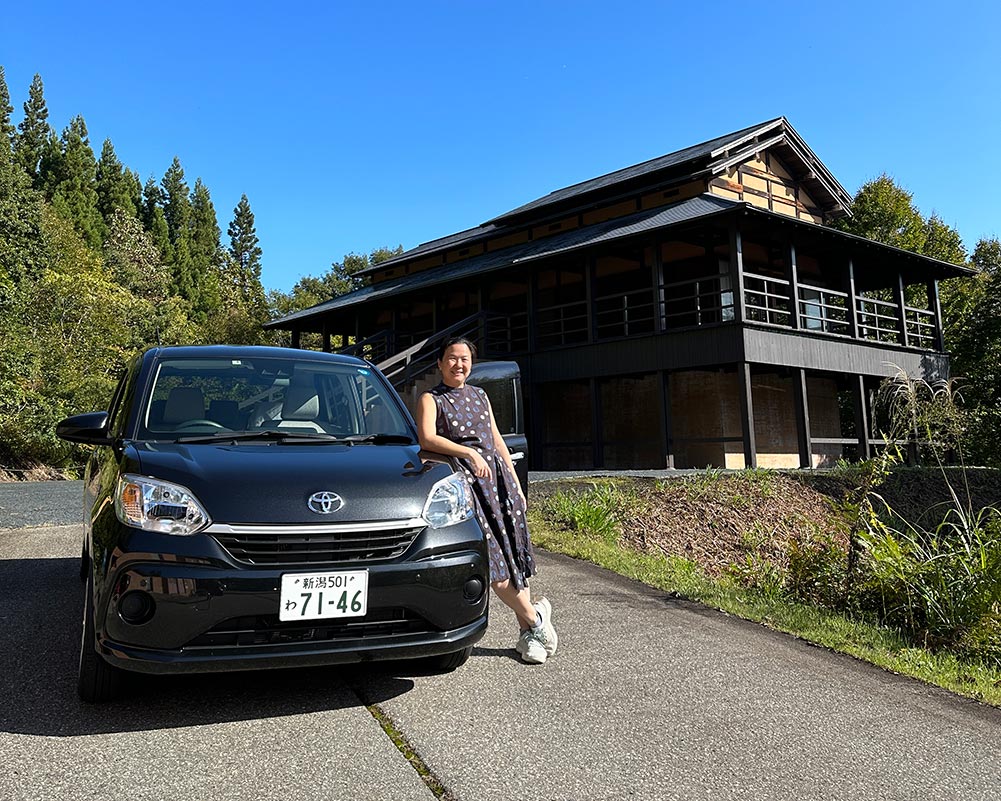
Should you purchase an ETAT admission passport
The outdoor installations of the Echigo-Tsumari Art Triennale are free to view, but some of the works require an entry fee. Depending on when you go and how much you want to see, it may make more sense to buy an Admission Passport (4,500 JPY for 2024 summer season) that grants you entry to all the works for one price.
This passport is usually valid for a few months, but it may be worthwhile to buy even if you are only going to be using it for just a few days. I bought the 2023 passport which was valid from April to November for 2,500 yen and while I didn’t manage to see everything, it would have cost me 5,400 yen to pay for entrance fees for what we visited if we didn’t have the pass.
The passports are mostly valid for 1 visit per installation, but give 50% discount for a revisit. I gave the pass to a friend based in Japan after my trip in case she wanted to make use of the installations that I didn’t have time to visit.

Have you been to the Echigo-Tsumari Art Triennale aka ETAT? Tell me what your favourite works are, I hope to go back again in a different season to see new works! In the meantime check out my other posts for more things to do in Niigata.

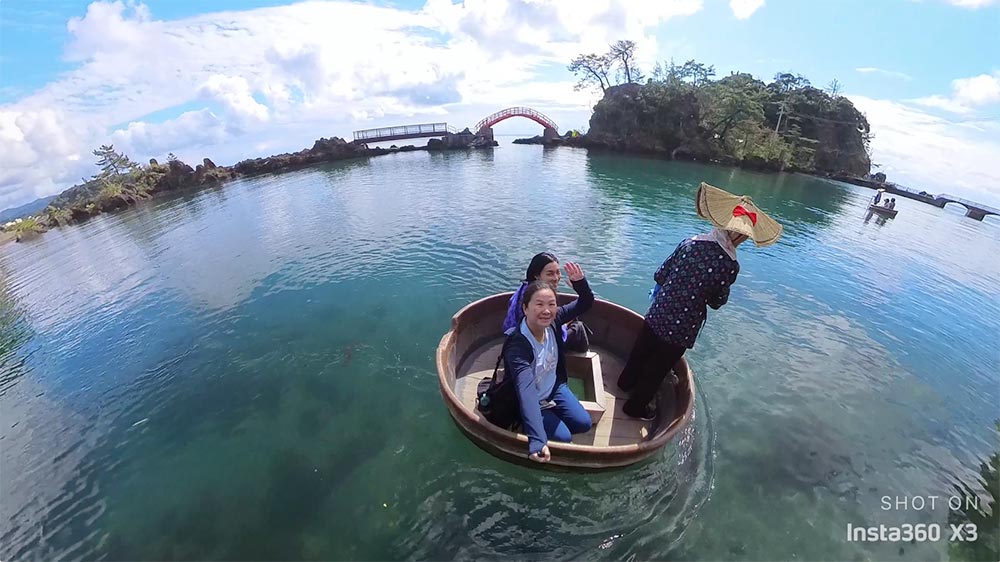
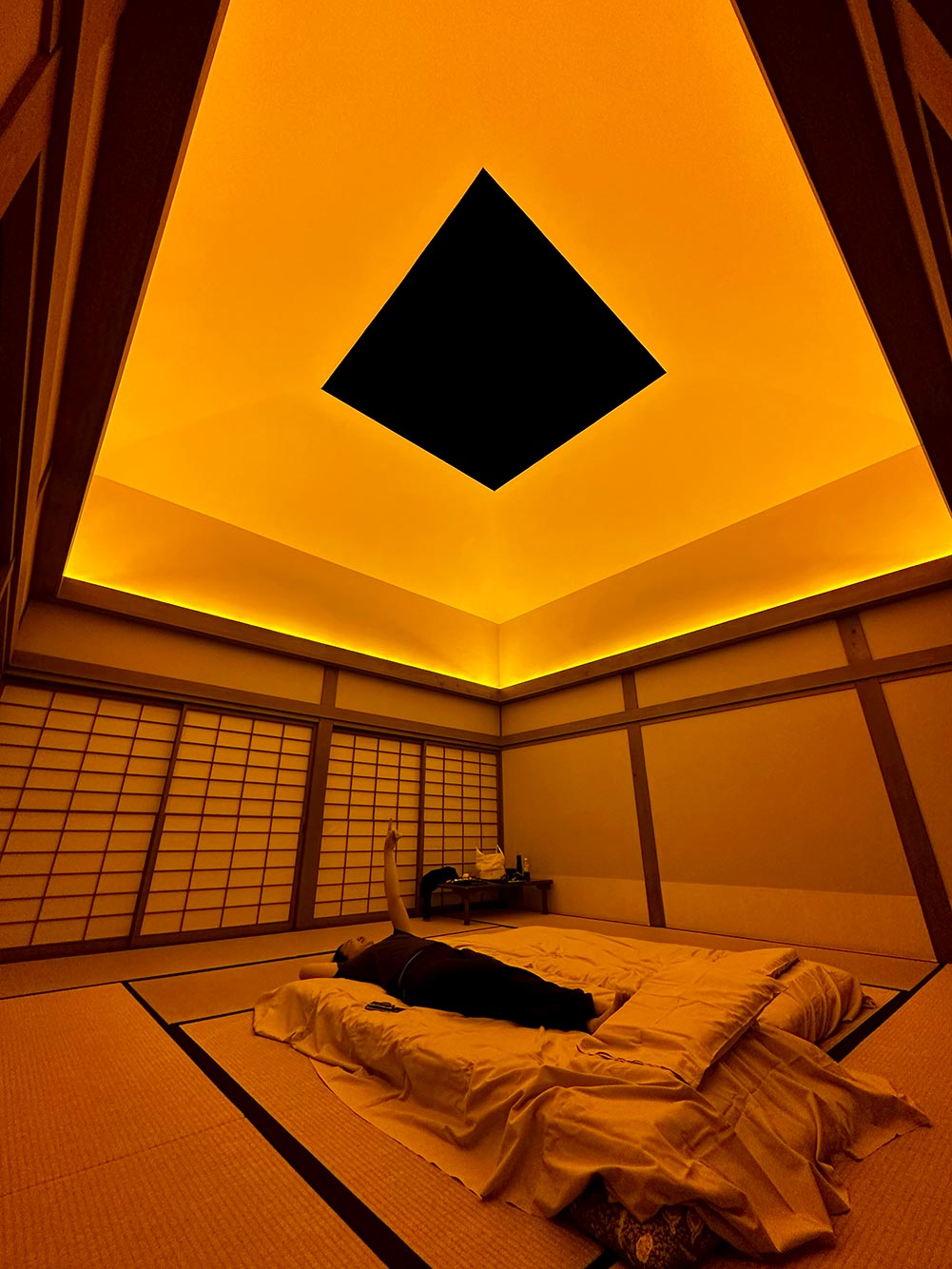
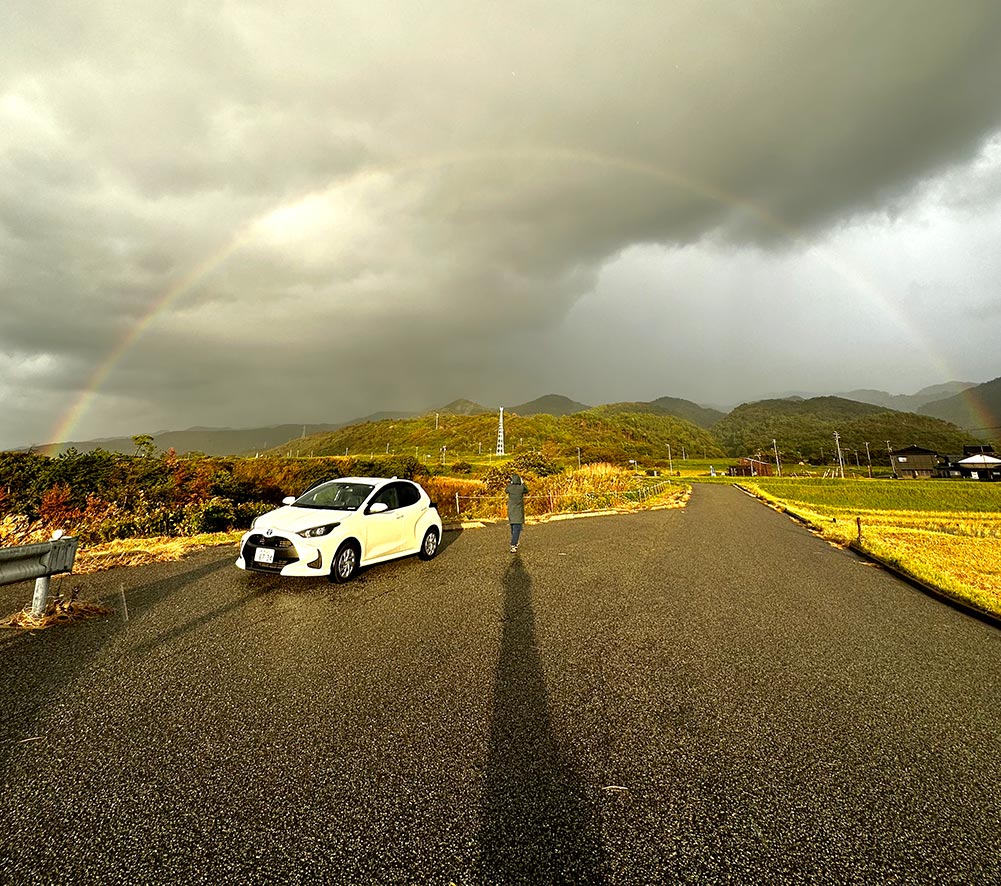

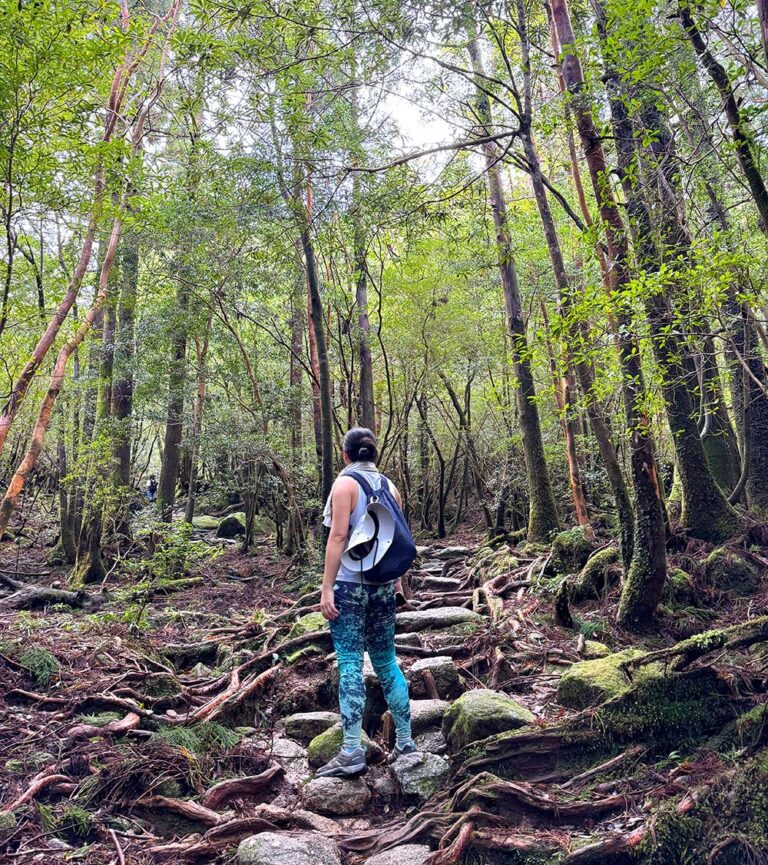

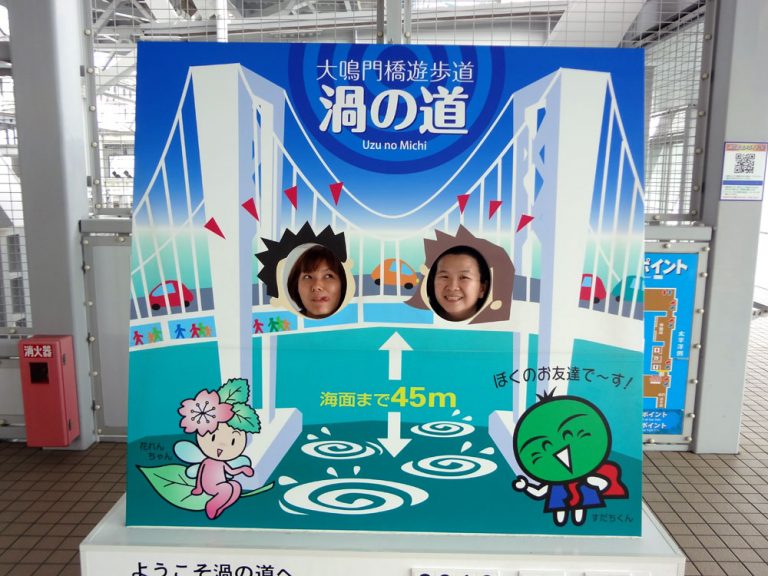

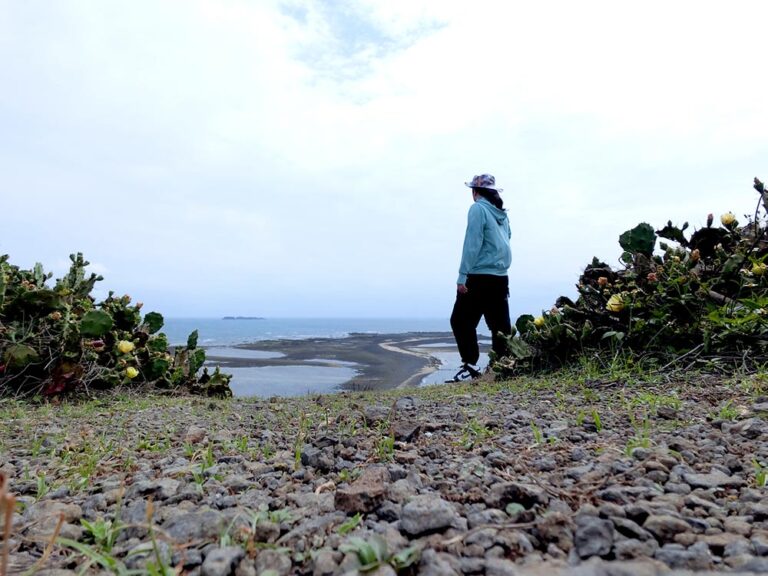
Hi Jaclynn! A fellow Singaporean here :) My name is Rachel and I work in the arts. I am extremely intrigued by this triennale and was wondering if it is possible to visit it with no car as I can’t drive :( Would you by any chance also know if there are any english tours?
Cheers!
Hi Rachel – you can visit without a car – there are usually extra shuttle buses during the triennale period and some of the works are in hubs close to towns/main train stations so it’s definitely doable without a car, you just can’t visit some of the more out of the way stuff probably! Also tours as far as I know they only have Japanese ones, though you probably want to check the official website just in case that changes!